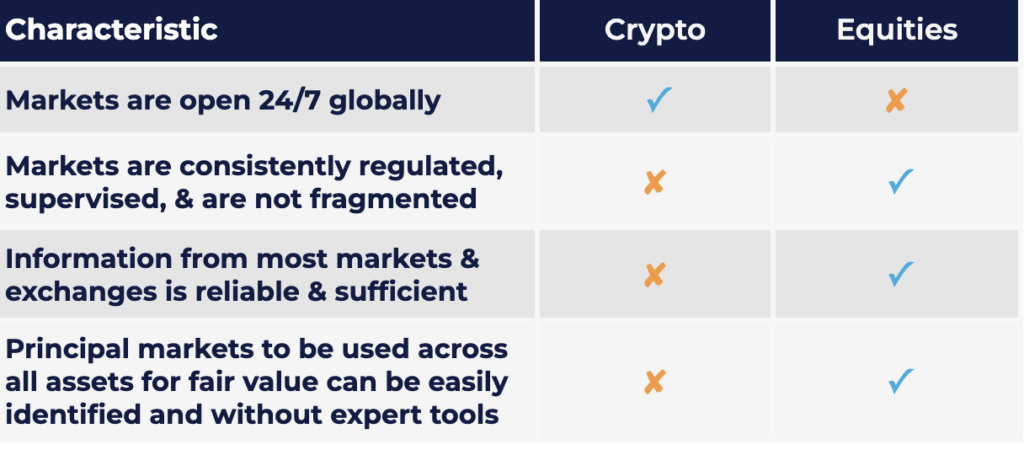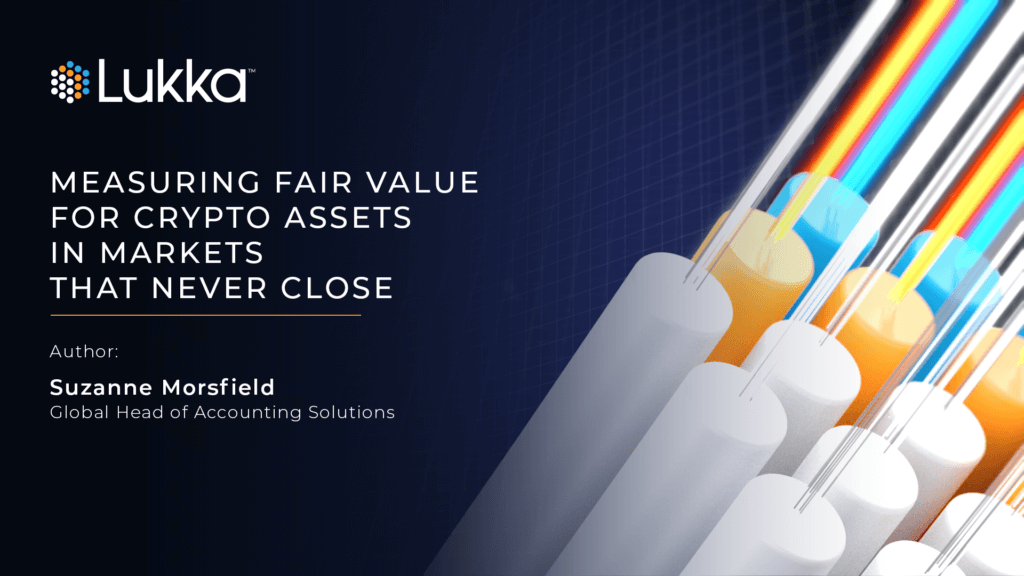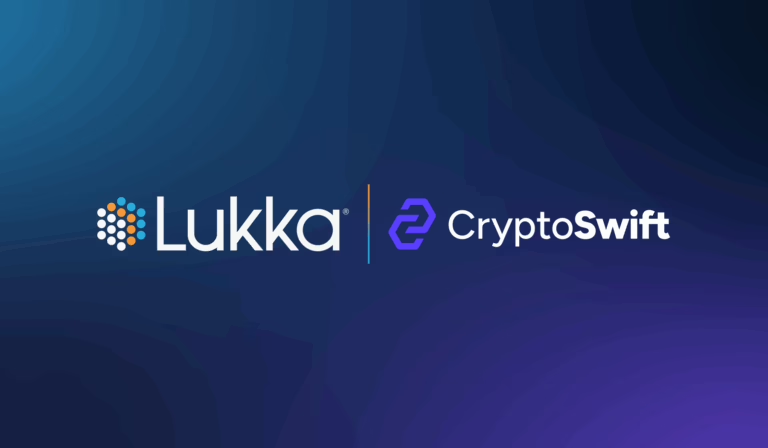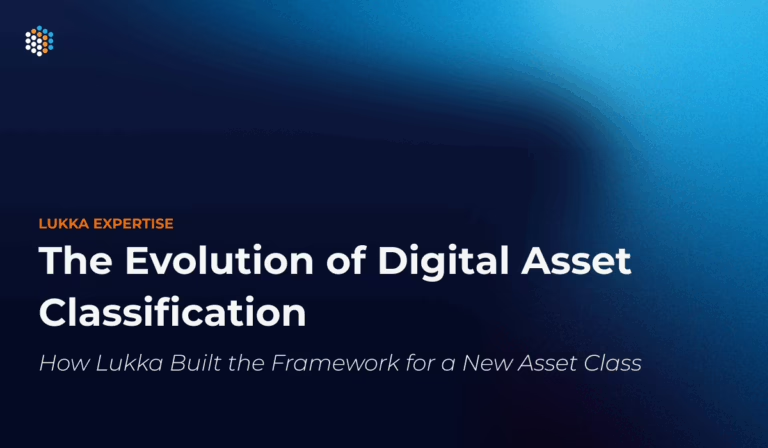It’s always midnight somewhere.
By Suzanne Morsfield, Global Head of Accounting Solutions
Upcoming changes in requirements make this more relevant than ever:
The notion of measuring crypto assets at fair value has gained increased interest because of the FASB’s recent vote to require fair value for a larger subset of crypto assets. The final version of the new requirements and the effective dates have not yet been released, but it’s crucial to begin discussing and planning to estimate fair value for the assets within the decision’s scope. One key practicality that is unique to crypto assets is that reporting entities currently have an element of choice in the time of day at which they price their end-of-day holdings. And, because of the global nature of crypto markets, the most informative fair value for accounting purposes is in that part of the world where the most reliable measures of volume and exit price are, regardless of the time zone–i.e., it’s always midnight somewhere.
Some key differences between equities and crypto markets:

This table is not intended to be comprehensive, but it draws attention to those areas of difference that matter for financial reporting definitions of fair value–e.g., how crypto asset markets function, their quality, and the tools needed to identify a principal market within this ecosystem. It is important to note, that despite there being unique challenges related to the characteristics of crypto markets, this does not make determining FMV unsolvable. In many ways, crypto markets and the underlying technology offers more transparency into prices than is typical in traditional markets.
Principles for estimating fair value – a reminder:
Fair value guidance for accounting purposes is derived from specific accounting standards that focus solely on the accounting concept of fair value–ASC 820 and IFRS 13 (for US GAAP and IFRS, respectively). These standards were developed at a time when both the FASB and the IASB were working together to develop joint requirements on a series of topics. Therefore, the key approaches are very similar, if not identical, in most cases. Notably, both standards lay out the principles for fair value, but do not give a precise recipe for calculating it. To be fair, there are some prescriptive elements, but they are fewer than one would think. Both standards are also consistent in the idea that fair value should be informative.
Below are some of the main ingredients in the US GAAP and IFRS standards for establishing fair value for actively traded assets (and liabilities):
- Apply a market-based, orderly transaction approach;
- Identify the Principal Market as the market with the “greatest volume and level of activity”;
- Rely on quoted and observable prices; and
- Use the exit price of a market participant in the Principal Market.
The reporting entity has to choose a time of day to apply all of these principles and find fair value. In traditional equity markets, this task is relatively straightforward because end of day pricing typically occurs when the market closes. Because an exit price is required for accounting purposes, this then implies that fair value is most often based on the price of the final trade just prior to the close. So, how should such a final trade be identified for markets that never close?
Choosing a time of day for fair value.
The 24/7 global aspect of crypto trading and transfers is an amazing development that traditional financial markets have aspired to for decades. While it is a key feature and attraction for crypto investors, it also creates a practical challenge. At what time of day should a reporting entity measure the value of their crypto? Does it matter?
Currently, most regulators and standard-setters have not prescribed a particular time of day for establishing fair value. Each entity can choose their own time of day, with a special caveat for impairment testing. To conduct this test, the SEC has weighed in, for example, that the lowest fair value within the test period should be used. Lukka does not provide accounting or tax advice, but one important principle to invoke here is it’s advisable to maintain well-documented policies about the time of day chosen. Auditors likely will also want to see that this defined policy is applied consistently.
Some policy options include: the time at which the equity markets close for the majority of the entity’s equity holdings, 00:00 UTC, or other local norms for striking net asset value (NAV). In addition to documenting a particular time, management may also wish to document its reasons for the time of day chosen. Those reasons can be as simple as wishing to keep the pricing mechanics of their equity investments and their crypto investments aligned. Alternatively, an entity may wish to examine in more detail the price formation data for the particular crypto assets they trade or hold.
Volume and trade frequency of some assets may be stable across an entire 24-hour period, or it may decrease or increase substantially after the equity markets close. Assessing the price formation process is more than simply examining price variation because the definition of a Principal Market for fair value purposes relies on reliable and sufficient trade volume and frequency information. As a result, analysis requires access to robust data that can in turn be used to examine volume and frequency across millions of trades, across times of day, across time zones, across many exchanges, and even across years. All of this analysis can then be used to substantiate the time of day chosen for the entity’s particular circumstances.
Conclusion
The punchline is that when it comes to choosing a time of day to estimate the fair value of crypto assets variation is permitted, and good documentation and analysis are recommended best practices. Lukka provides advanced tools and data by which to analyze and select an informed time of day for the set of crypto assets that any firm is holding or trading. This enables our customers to execute on that chosen time automatically so that companies do not need to intervene or make manual decisions. In addition, full transparency and reports are provided so that an independent, 3rd-party, AICPA SOC 1 and 2, Type 1 and 2 attested fair value time of day and methodology are applied.
Lukka’s proprietary Lukka Prime methodology provides FMV of actively traded crypto assets, fully compatible with GAAP, IFRS, as well as IRS rules, and today is used by audit firms, some of the biggest banks, exchanges, fund administrators, funds, trading firms, and so on. This methodology has proven to solve use cases beyond just accounting. Underneath the hood of the Lukka Prime fair value methodology is a foundation of high-quality data and a classification system that permits users to further understand the types of crypto assets they are considering or are already holding– further, this data classification system allows you to help assess whether a particular crypto asset is likely to be within scope for the new fair value requirement. And, for any crypto assets that are not within scope, Lukka’s impairment product facilitates daily, monthly, quarterly, or annual impairment testing and calculation at the push of a button.


